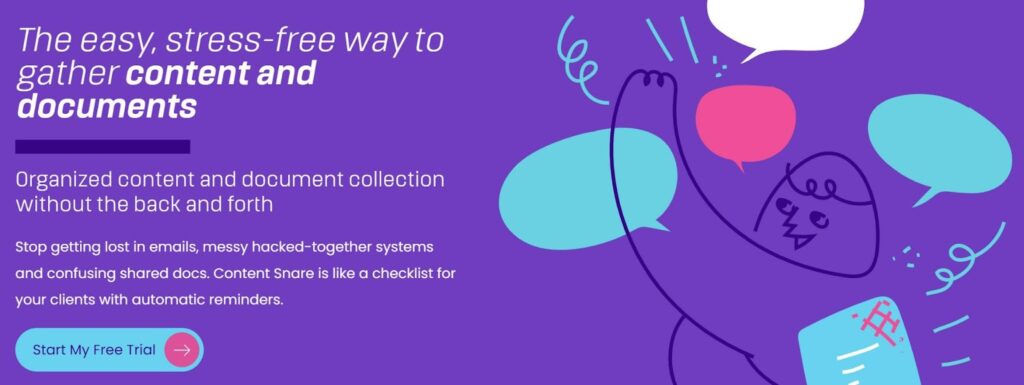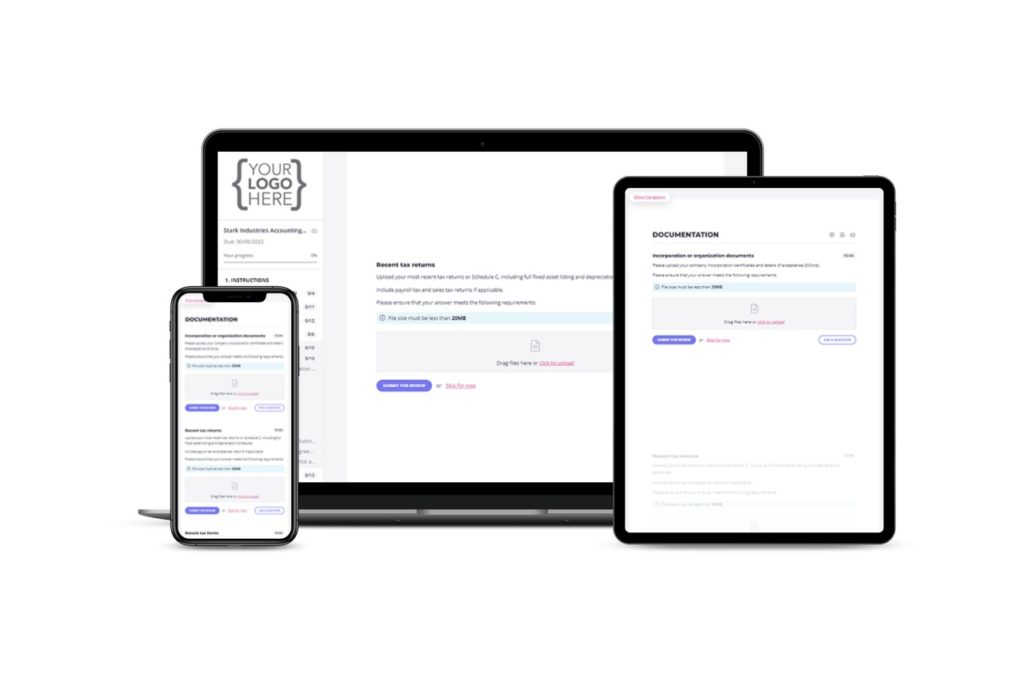When working with new clients, especially as a marketing agency, determining the needs of a client can never be a guessing game. In order to figure out what they need from you and whether or not the partnership could work out before beginning the sales process, it’s important to be completely clued-up.
Initially, this can be done through thorough research that can be conducted independently of the client. You can have a rummage around their social profiles, website and other online channels to help answer some of your questions.
However, at a certain point, you will require intervention from the client so that you can learn a bit more about the specificities of the project, the desired timing, the budget, etc. This can be done through a marketing client questionnaire, allowing you to take a deep-dive into your client’s business and provide them with a personalised sales pitch that’ll knock their socks off.
Whether you're creating a marketing campaign or marketing strategy questionnaire, this post will help. So, let's dive in!
Get our marketing client questionnaire template
Content Snare is here to help you create your next marketing client questionnaire. Sign up to access our built-in client questionnaire template. It’s ready when you are.

What questions should I be asking in a marketing client questionnaire?
Whilst your new client questionnaire must have a moderate length in order to learn enough about your client, bombarding the client isn’t the answer. It’s best to keep the questionnaire short and sweet so you’re not wasting your time or the client’s time.
Here’s a list of the questions you’ll need to include in your questionnaire and why.
Business discovery
This business discovery section will allow you to visualise the client’s business through a magnifying glass and figure out the client’s goals, strengths and weaknesses.
- Please describe your business.
- What are five key words you'd use to describe your business?
- What do you offer to your customers that makes them choose you over your main competitors?
- What do you feel the weaknesses in your business or business model are?
- What obstacles do you feel are standing in the way of your success at the moment?
- What do you feel your main unique selling points are?
- How do you feel we can best convey those to the public?
- What problem does your product solve for them?
- Have you tried any marketing solutions in the past?
- What are your biggest dreams with regards to your business?

Customer persona
This section is all about determining the exact target audience your client is looking to focus on. By asking such specific questions, your client has to narrow things down and clarify their target market.
- Please provide a detailed profile of your customer.
- What does your customer do for a living?
- What level of education has your customer completed?
- What's your customer's approximate income?
- Is your customer married?
- Where is your customer located?
- Describe your customer's character.
- Describe the lifestyle your customer leads.
Customer engagement
Last but not least, these customer engagement questions are crucial when it comes to determining how your client finds customers, how customers find them and how the entire process could be improved.
- What question(s) are you constantly being asked?
- What does your ideal customer need to know about you?
- If your ideal customer were to ask you one question, what would that question be?
- When customers are describing the pain points that lead them to using your product, what is their mood?
- What is stopping your customer from using your product or services?
- What do you feel is the best way to engage your customer?
- Which social media platforms do you think your customer might use?
- Please provide us with links to at least three direct competitors.
- At the moment, where are the majority of your customers finding your business?
- Please describe your current business sales funnel.
- Which touch points with your future customer does your company have available to it?
- Let us know of your aims and expectations for this project.

Once I have all the answers, what are the next steps?
Perfect! You now have all of the questions you need in order to hand-craft and send a thoughtful marketing questionnaire to a client or prospect.
However, once you’ve been provided with detailed answers from your client and have a clear understanding of what the client expects, there are some essential next steps you need to take in order to maintain a smooth process.
Review and collect the information
Think you’ve got all the details? Well, think again.
If you sent your client the list of questions via email or within a Google form, for example, the probability of items being missing or not as requested are incredibly high.
This is mainly due to the fact that these methods don’t allow as much control over the specifications of the content provided, meaning that a lot of wrong information may end up slipping through the cracks, stopping the entire process in its tracks.
This is why it’s vital to use an online tool like Content Snare in order to create your marketing questionnaire, review your client’s answers and export the information seamlessly.

Content Snare allows for a smooth and straightforward content collection experience for both yourself and your clients. Using the intuitive request builder, you can create and send stunning questionnaires from scratch or, to make your life even easier, you can browse the built-in template gallery, where everything is made for you and ready to go in seconds.
The main benefit of Content Snare when it comes to collecting information is that, unlike other platforms, you truly are in control.
By being able to set strict requirements (such as minimum/maximum number of characters, for example), you’re much more likely to get exactly what you need first time, cutting down the time required to review and request changes by a matter of hours per project.
Plus, when you’re done and ready to pass the client information onto a project/account manager to begin the next steps, there’s nothing left to do but select an export option from the many available within the dropdown menu. You’ll receive a beautiful, clean copy with all of the information you need, exactly as you arranged it.
Arrange a follow-up meeting
Now you have all of the project information you need from your questionnaire, it’s time to schedule a follow-up meeting with the client.
This will give you an opportunity to start your new business relationship, introduce them to the key stakeholders and the roles they’ll be playing within the client’s project, set expectations, discuss the agreed upon services and to go over any additional questions you may have.
From there, you’ll be able to establish a plan and roadmap for the execution of the project and kick off the collaboration!

We really hope you enjoyed reading this post and that our questions will help you get the most out of your next marketing client questionnaires!
Are there any extra questions you think should have made the cut? Let us know in the comments below!



